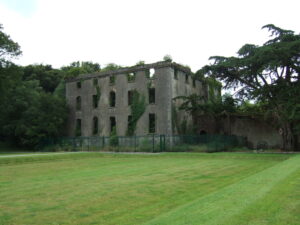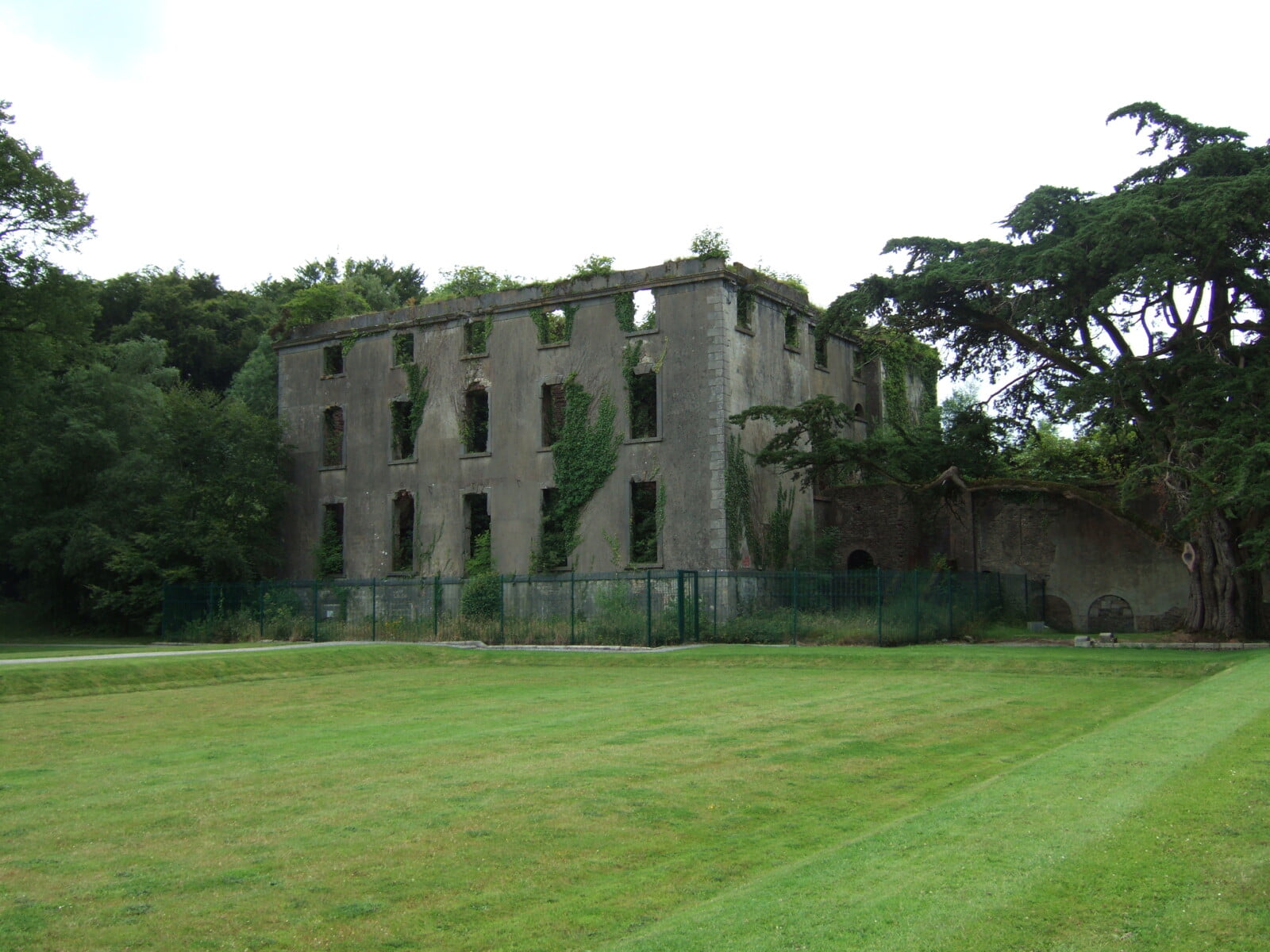The term “woodstock”, which is old English in origin, once meant a dwelling or a clearing in the woods. Which is where we started this overview of old Irish poetry, with The Hermit's Song. Today, it has come to mean a large, impromptu gathering, thanks to a certain rock festival you may have heard of.
In this post, I'd like to consider three places called Woodstock–one in Britain, one in Ireland, and the best known one, in America, as a prelude to the final poem in my anthology.
It might seem that the histories of Woodstock in England's Oxfordshire, Woodstock in Ireland's Kilkenny and Woodstock in New York State, USA, have little to do with Irish women's poetry. But bear with me.
England's Woodstock
Woodstock Oxfordshire: Wikipedia image
England's Woodstock is in Oxfordshire, and famous for centuries for its glove-making. It was built around Woodstock Palace, a residence popular with several English kings throughout the medieval period but destroyed in the English Civil War.
That war between the Royalists loyal to King Charles I, and the Parliamentarians led by figures like Oliver Cromwell, was not just a political conflict but also a cultural and ideological one. It arose out of tensions between the monarchy, parliamentary power, and religious factions.
The aftermath of Cromwell's campaigns left lasting impressions, deeply embedded in the national narratives of both countries nearly half a millennium on.
In Ireland, the Cromwellian conquest led to mass land confiscations from Irish Catholics given to English Protestant settlers, with centuries of socio-economic and political fallout. Cromwell is remembered as a brutal oppressor responsible for widespread death, displacement, and religious persecution.
The brutal military campaigns in towns like my home town of Wexford, where his forces killed thousands of civilians, and his policy of forced migration–often summarized by the phrase “To Hell or to Connacht”–have left what feel like indelible scars.
His actions are described as genocidal by many historians today.
Yet for many English progressives, Cromwell is the champion of parliamentary democracy, a pivotal figure in the transition from an absolute monarchy to a constitutional monarchy. His leadership in the English Civil War and the establishment of the Commonwealth represented a decisive shift toward parliamentary sovereignty.
And also, ironically given his persecution of Irish Catholics, a champion of religious freedom. Under his rule, Jews were readmitted to England after centuries of exile, and of course he was tolerant of all Protestant sects who were oppressed in England.
While his establishment of the Protectorate was seen by some as a betrayal of republican ideals, and his puritanical clampdown on cultural and leisure activities were oppressive, they appreciate Cromwell’s efforts to modernize and reform key aspects of the English state
The destruction of Woodstock Palace was a practical and symbolic act to challenge and diminish royal authority. We can imagine the Parliamentarian forces nearing, the grounds trembling to the sound of horses hooves. A cannonball, with a fiery tail, soaring through the air, crashing into one of the palace towers. A deafening explosion, dark plumes of smoke and debris fired into the sky. Woodstock, the jewel of Oxfordshire, would never have seen anything like it.
Servants scrambling through secret tunnels. Walls reverberating with the relentless pounding of cannon fire. The cries of combat in the pristine gardens, now a battlefield. Rose bushes trampled, fountain waters stained red.

Blenheim Palace, near Woodstock Oxfordshire “England's Versailles”.
Sixty years after the English Civil War, the palace remains were cleared and stonemasons, carpenters, and laborers were at work on the creation of a new architectural masterpiece: Blenheim Palace, a beacon of Baroque artistry often known as the English Versaille, the birthplace of Winston Churchill (another major English figure in Irish repression), and now a UNESCO World Heritage Site.
Named in honor of the 1704 Battle of Blenheim, Blenheim Palace was the reward to John Churchill, the 1st Duke of Marlborough, for his military victories against the French and Bavarians during the War of the Spanish Succession, particularly at the Battle of Blenheim.
Opinions about the palace's aesthetic have always been divided but its impact is undeniable, as a familial residence, a mausoleum, and now an international world heritage site.
Ireland's Woodstock
Woodstock Co Kilkenny was the last residence of Mary Tighe, who wrote last week's poem (patron post, log in needed). This once fine Georgian house and estate, located near Inistioge on the west bank of the River Nore, is one of those derelict ruins you find all over Ireland.
In 1921, it fell victim to “The Troubles”, the euphemism used for Irish rebellion against British colonization.  The property was occupied by the infamous Black and Tans during the Irish War of Independence and then, during the Irish Civil War that followed by the Free State Army.
The property was occupied by the infamous Black and Tans during the Irish War of Independence and then, during the Irish Civil War that followed by the Free State Army.
Following the Anglo-Irish Treaty, Ireland was divided between those who supported the treaty (leading to the establishment of the Irish Free State) and those who opposed it, seeking a fully independent republic.
The Irish Civil War was a brutal confrontation between former allies, mired in political, ideological, and territorial disputes.
In those days when IRA (Irish Republican Army) membership was still a badge of honor, the anti-Treaty side became known as “irregulars”. It was they who, winning the first skirmish of civil war, led the pro-Treaty troops out of the house and then set it alight.
A once-grand Georgian mansion representing the Anglo-Irish elite, its destruction can be viewed in the larger context of the Irish Civil War's broader destruction and the attempt to eliminate symbols of British influence and colonial dominance.
Now Woodstock House is a derelict empty shell, overgrown with vegetation and legends–stories of ghostly apparitions, mysterious noises, and other paranormal activities are whispered.
In sum, Woodstock House, with its rich history, tragic decline, and the tales that have grown around it, stands as a melancholic yet captivating landmark. It's a haunting blend of natural decay and historical resonance, a place where the past lingers palpably in the present.
You can visit, should you happen to be in the area. The grounds are being restored by Kilkenny County Council and are open to the public.
America's Woodstock
Both Woodstock sites serve as haunting reminders of the tumultuous consequences of civil war. America's Woodstock is the opposite. The name Woodstock, like so many names of European towns and villages, was taken to the new world and given to a town in Ulster County, New York, established in 1787.
In August 1969, that small town became famous when a music festival brought together nearly half a million people together to celebration of peace and love, poetry and music.
Though the festival was held in a dairy farm at Bethel, it was named for Woodstock, where there was a vibrant community of artists and musicians, including Bob Dylan. The event was a fundraiser to open a recording studio in Woodstock.
Like so many other Irish poets, for Tighe the Irish landscape was both a sanctuary and a witness to history.
Just as Woodstock festival was a space for voicing dissent and pushing for change, Irish women's poetry has been a space for challenging societal norms, questioning gender roles, and asserting independence through art.

Poetry and all-access patrons can enjoy a translated version of Mary Tighe's poem, Address To My Harp, in this patron-exclusive post here.
My patrons get access to my poetry, hot off the creative presses, though password protected posts on my blog.
New poems are exclusive to patrons until they are published in one of my books.
